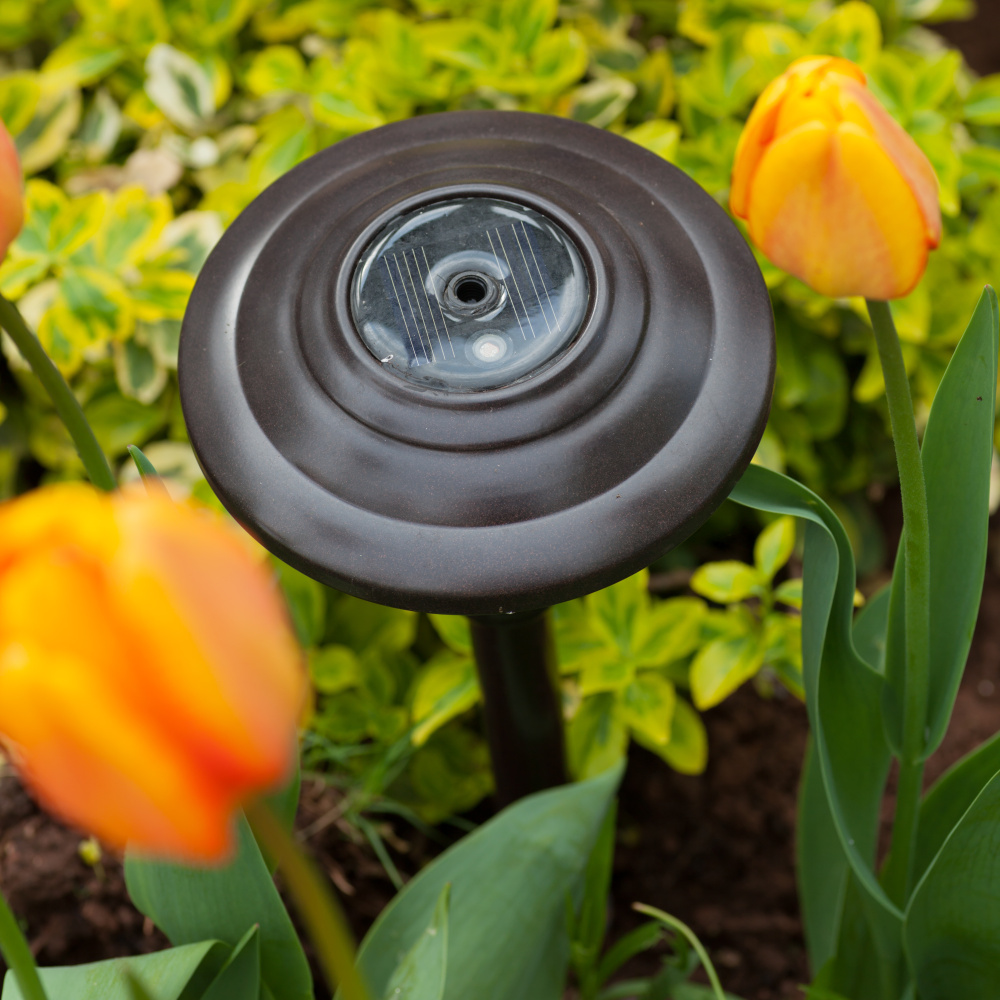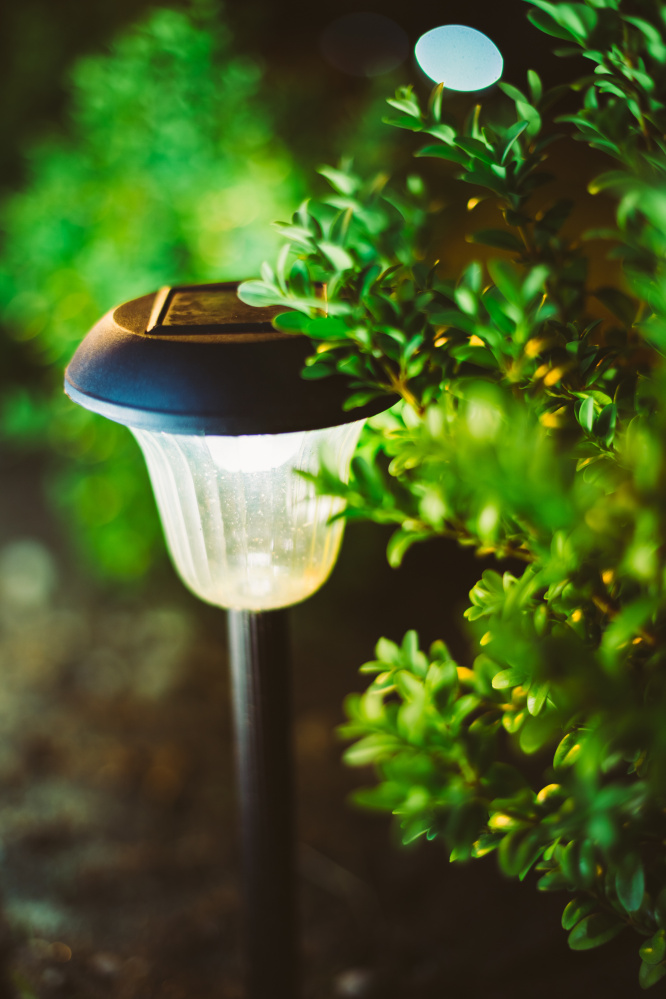In the beginning, the head gardener said, “Let there be light.” And there was light.
But it didn’t last long, for several reasons – mostly my fault.
When working in our yard, my wife (aka head gardener) and I still occasionally dig up remnants of the wires from our first low-voltage garden-light system, which stopped working about 1990.
When I decided to write about solar-powered landscape lights for this energy-themed issue of Source, I had assumed that – like Polaroid cameras – the low-voltage lights would have disappeared from the market. Instead, I found they are prominently displayed at both Lowe’s and Home Depot as well as on various online shopping sites.
Take my advice: If you want lights in your garden, go solar. First, you won’t have to dig a trench for the low-voltage wiring. Second, you won’t be tempted (as I was) to add extra lamps to the line, thus burning out the transformer that converts 110-volt household power to the 12-volt power needed for the system.
Also, if you decide you want to move a solar light, it’s a lot easier if you don’t have to juggle the wires (and the trenches). Finally, you are getting your electricity from the sun and not the local power company.
We’ve run into only one problem with solar-powered lights: They sometimes get smashed by sledding, bicycling and running grandchildren – that always seems like a fair trade-off – and the occasional dropped ladder.
Lights add a lot to a garden. The most common use is lining walkways, so visitors after dark can be led to the door you want them to use. If you have decorated your house for Christmas, floodlights let passers-by see your handiwork. If you have installed garden sculptures, you definitely want to light those at night.
Floodlights also can illuminate shrubs or trees when they are in full bloom, letting you enjoy them from the time it gets dark until the time you go to bed. With solar lights you can move them from the witch hazel, to the magnolia, the azaleas, the rhododendrons, the dogwoods and the rose of Sharon as the year progresses and each one in turn becomes the blooming star of your garden.
Some solar lights come in colors, acting as decorative sculptures of sorts to be viewed from the house. Motion-sensitive lights are available, so you and your guests can see when they drive in or perhaps you can spot the deer strolling through your yard.
With bright LED lights and newer batteries, solar lighting is more carefree than ever, according to Becky Tibbetts of Somerset Stone and Stove in Oakland. The business, which she and her husband own, sells a variety of solar-powered ornamental lights.
“The solar-powered lights are really bright, and they work well,” she said, adding that the lights will shine for 10 hours or more on a day of solar charging. The batteries last four years or more before they have to be replaced.
Prices vary widely – and, as is usually the case, you get what you pay for. Tibbetts said the post lights her company sells usually start at $250, and the floodlights at about $60.
At the big-box stores, the cheapest black-plastic solar path light is about $5, and the price per fixture drops when you buy sets of multiple lights. The cheapest floodlight is about $20. Attractive bronze fixtures cost substantially more.
If you don’t mind the heavy-duty extension cords, you could add lights to your garden by merely laying down an extension cord from an outdoor outlet and plugging a floodlight into the cord.
You’ll see outdoor floodlights on stakes for use during the holiday lighting season. If you have one of those and a waterproof, heavy-duty extension cord, you can floodlight your magnolia or Harry Lauder’s bare branches any time you want. There is the pesky fact that most of those extension cords are international orange, a color that in my case the head gardener finds objectionable.
All in all, solar lights are a great addition to the garden. I wouldn’t want to bathe the yard in so much light that I couldn’t see the stars, but I jump at the chance to let passers-by see how good the magnolia looks when it is in bloom.
Tom Atwell has been writing the Maine Gardener column since 2004. He can be contacted at 767-2297 or at tomatwell@me.com.
Send questions/comments to the editors.





Success. Please wait for the page to reload. If the page does not reload within 5 seconds, please refresh the page.
Enter your email and password to access comments.
Hi, to comment on stories you must . This profile is in addition to your subscription and website login.
Already have a commenting profile? .
Invalid username/password.
Please check your email to confirm and complete your registration.
Only subscribers are eligible to post comments. Please subscribe or login first for digital access. Here’s why.
Use the form below to reset your password. When you've submitted your account email, we will send an email with a reset code.